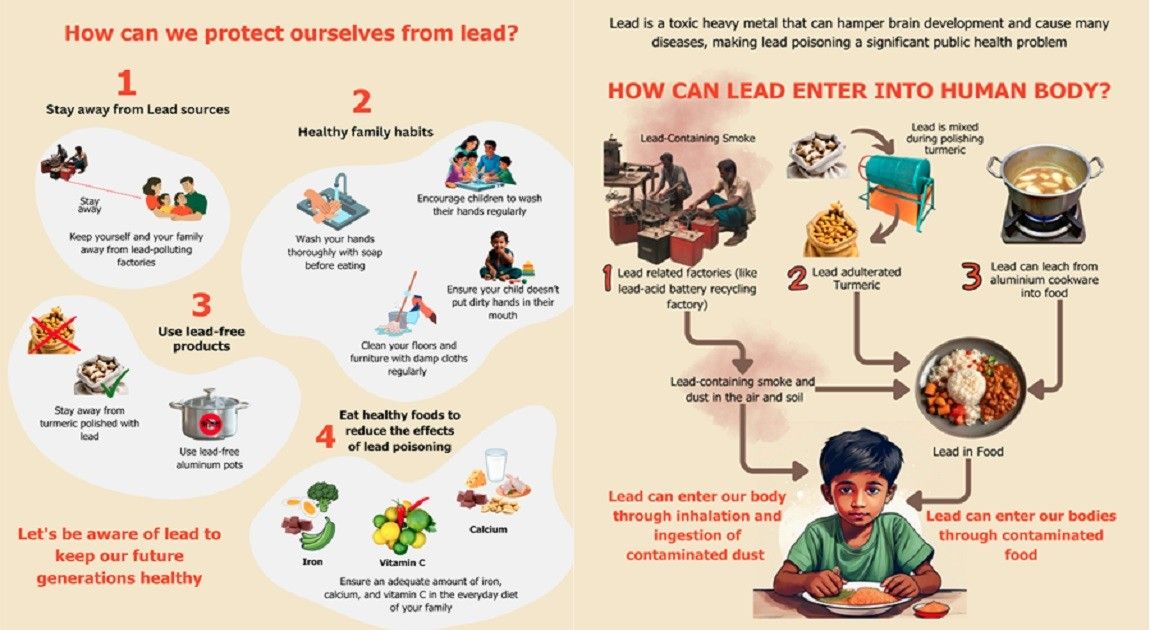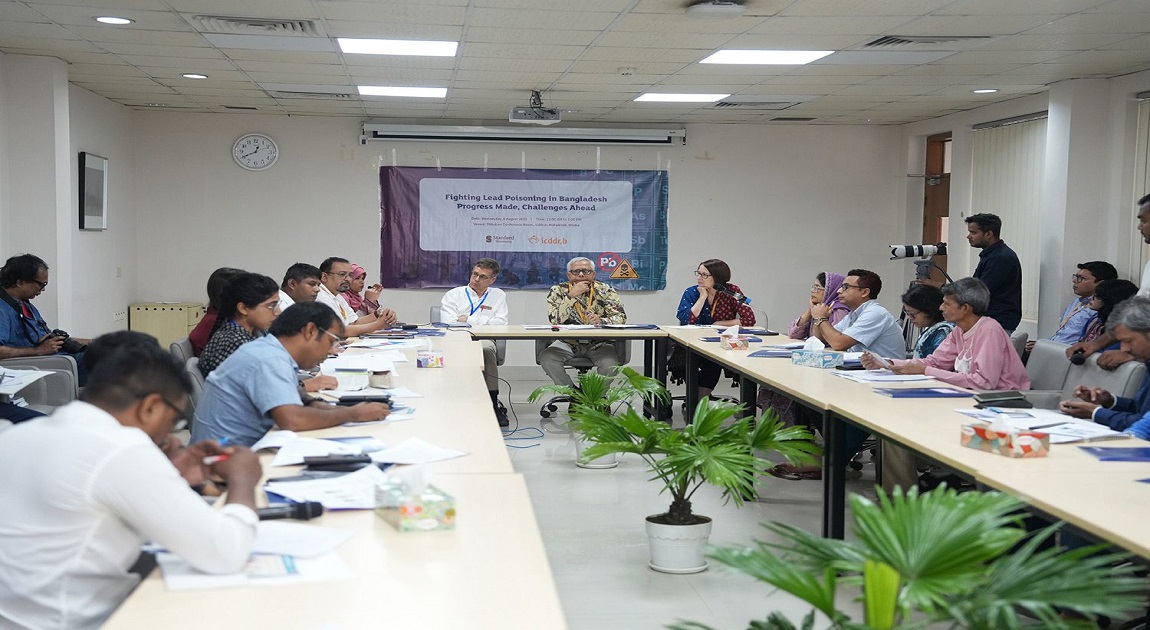A recent study has revealed that 98% of young children in Dhaka have dangerously high levels of lead in their blood, raising serious concerns about the long-term health and cognitive development of an entire generation.
The findings were disclosed at a high-level discussion titled “Fighting Lead Poisoning in Bangladesh – Progress Made, Challenges Ahead”, organized by the International Centre for Diarrhoeal Disease Research, Bangladesh (ICDDR,B) on Wednesday.
The study, conducted among 500 children aged 2 to 4 in urban Dhaka, found that nearly all had detectable levels of lead in their blood, with a majority exceeding the safety threshold set by the US Centers for Disease Control and Prevention (CDC). Children living within 1 kilometer of lead-leaking industries had 43% higher blood lead levels (BLLs) than those living more than 5 kilometers away. Indoor air pollution, household dust, and lead-containing products like cosmetics, cookware, and toys were identified as major sources.
UNICEF ranks Bangladesh fourth in the world for child lead exposure, with over 36 million children affected nationwide. A previous study in Dhaka’s slums found that 87% of children under two had blood lead levels exceeding 50 µg/L — significantly higher than safe limits — and many suffered from stunting and cognitive delays as a result.

Speaking at the event, Dr. Sarah Salway, Senior Director of ICDDR,B’s Health Systems and Population Studies Division, warned that lead exposure remains one of Bangladesh’s most serious yet overlooked public health challenges. “Lead poisoning is silently harming children’s development, and the consequences will be long-lasting if immediate steps are not taken,” she said.
Professor Steve Luby of Stanford University, a former ICDDR,B director, emphasized the irreversible neurological damage caused by lead exposure, especially in early childhood. “It can impair brain development, reduce IQ, and limit future economic productivity,” he noted.
While lead contamination in turmeric has been nearly eliminated — dropping from 47% in 2019 to almost zero in 2021 — other sources remain unchecked. Dr. Md. Mahbubur Rahman of ICDDR,B cited unregulated lead-acid battery recycling, lead-based paints, and contaminated consumer goods as major contributors.
ICDDR,B Executive Director Dr. Tahmeed Ahmed called on authorities to act urgently. “We must protect our children. This is not just a health issue — it’s a national development issue,” he said, urging stricter regulation and relocation of lead-emitting industries away from residential areas.
The event concluded with a joint call from public health experts, journalists, and researchers for a coordinated national strategy to eliminate lead exposure and ensure a safer future for Bangladesh’s children.














-(25)-20251122062715.jpeg)


-(28)-20251121115333.jpeg)



-(28)-20251121101833.jpeg)

-(25)-20251121051022.jpeg)












